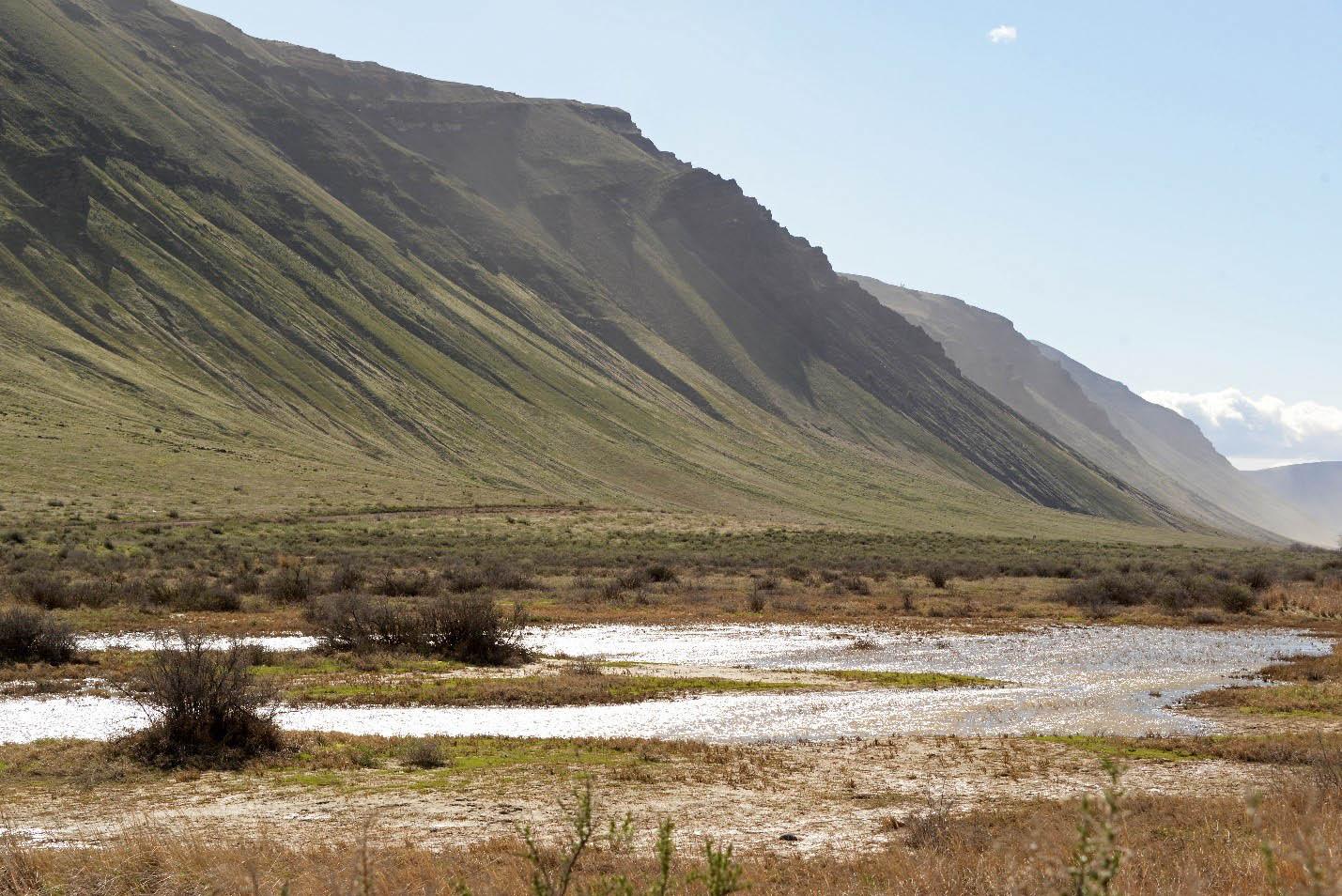
The Lower Crab Creek Unit lies within the valley of Lower Crab Creek along the steep north side of the Saddle Mountains. The unit consists of shrubsteppe, wetlands, and riparian areas along the creek, and the seep ponds and uplands on the bench north of the creek provide a diverse habitat for many species of wildlife.
The Lower Crab Creek Unit is located southwest of Royal City in Grant County. It can be accessed from Lower Crab Creek Road off of State Highway 243.
The Lower Crab Creek unit occurs in both the Lower Crab Creek and Upper Columbia-Entiat watersheds within the Columbia Plateau.
This unit is part of the Columbia Basin Wildlife Area.
Game Management Unit: 278
Getting there
Maps and directions to WDFW-managed access points for this unit. Opens Google Maps in a new tab.
Recreation and public access
A Discover Pass is required on WDFW lands -- including water access areas, wildlife areas, and campgrounds -- unless you already have a Vehicle Access Pass issued with the purchase of an eligible hunting or fishing license. Recreate responsibly on public lands: please know the Public Conduct Rules.
Public facility information:
- Parking area
- Outhouses
Hunting
WDFW releases pheasants on this unit to provide a hunting opportunity.
Hunting advisories
- On all WDFW designated pheasant release sites it is unlawful to possess shot (either in shotshells or as loose shot for muzzleloading), other than nontoxic shot, when hunting for upland game birds (pheasant, quail, chukar, and gray partridge), mourning dove, and band-tailed pigeon (WAC 220-414-040).
Fishing
Lenice and Nunnally lakes are quality trout fishing lakes.
Wildlife viewing
This unit includes wetlands and riparian areas along Lower Crab Creek, seep ponds, and upland habitats, offering opportunities to view a variety of wildlife.
Ferruginous hawk and large flocks of migrating Sandhill cranes may be seen at this unit.
Search for potential birding opportunities on or near a wildlife area unit by using eBird Northwest, a citizen science database portal that provides freely-shared bird lists at 'hotspots' and interactive maps plus other birding information updated daily.
Conservation
A Natural Area Preserve, near Smyrna, protects native black greasewood and saltgrass community.
Special habitats and species
Unique plant communities include: black greasewood/alkali salt grass association, alkali saltgrass association, big sagebrush-spiny hopsage/Sandberg's bluegrass community, black greasewood/Sandberg's bluegrass, giant wild rye-alkali saltgrass.
Conservation goals
- Maintain enhanced wildlife habitats and preserve native plant communities and important habitats
- Restore and preserve shallow water habitat and pools
- Manage migrant waterfowl, upland game birds and priority species
Unique plant communities include: black greasewood/alkali salt grass association, alkali saltgrass association, big sagebrush-spiny hopsage/Sandberg's bluegrass community, black greasewood/Sandberg's bluegrass, giant wild rye-alkali saltgrass.
- Maintain enhanced wildlife habitats and preserve native plant communities and important habitats
- Restore and preserve shallow water habitat and pools
- Manage migrant waterfowl, upland game birds and priority species
Land stewardship
The Lower Crab Creek Unit is comprised of acres that are owned by WDFW, as well as acres owned by other agencies but managed by WDFW. Acquisition by WDFW was made possible through permission from the Grant County Public Utilities District in the 1960s; origination of the agreement was a requirement of the Federal Power Commission license granted the Public Utilities District to build Priest Rapids and Wanapum dams.
Acquisition history
The parcels making up this area were purchased between 1965 and 2020.
| Funder | Fund |
|---|---|
| Power, dike & irrigation districts | Mitigation Funds |
| US Fish and Wildlife Service | Pittman-Robertson Wildlife Restoration Program |
| US National Park Service | Land and Water Conservation Fund |
| WA Dept of Fish and Wildlife | WDFW Game Fund (now Wildlife Fund) |
| WA Recreation and Conservation Office | State Bond Account |
Management planning
2022 Columbia Basin Wildlife Area Management Plan
Every eight to 10 years, the Washington Department of Fish and Wildlife (WDFW) revises management plans for each of its 33 wildlife areas to document current conditions, address new agency initiatives, and identify new management priorities and actions. In between those major revisions, WDFW updates plans every two years to outline short-term objectives and accomplishments. In 2014, WDFW began the process of updating existing plans, many of which were written in 2006. The new plans are being developed with significant public participation and input.
Planning Advisory Committee
Columbia Basin Wildlife Area Advisory Committee